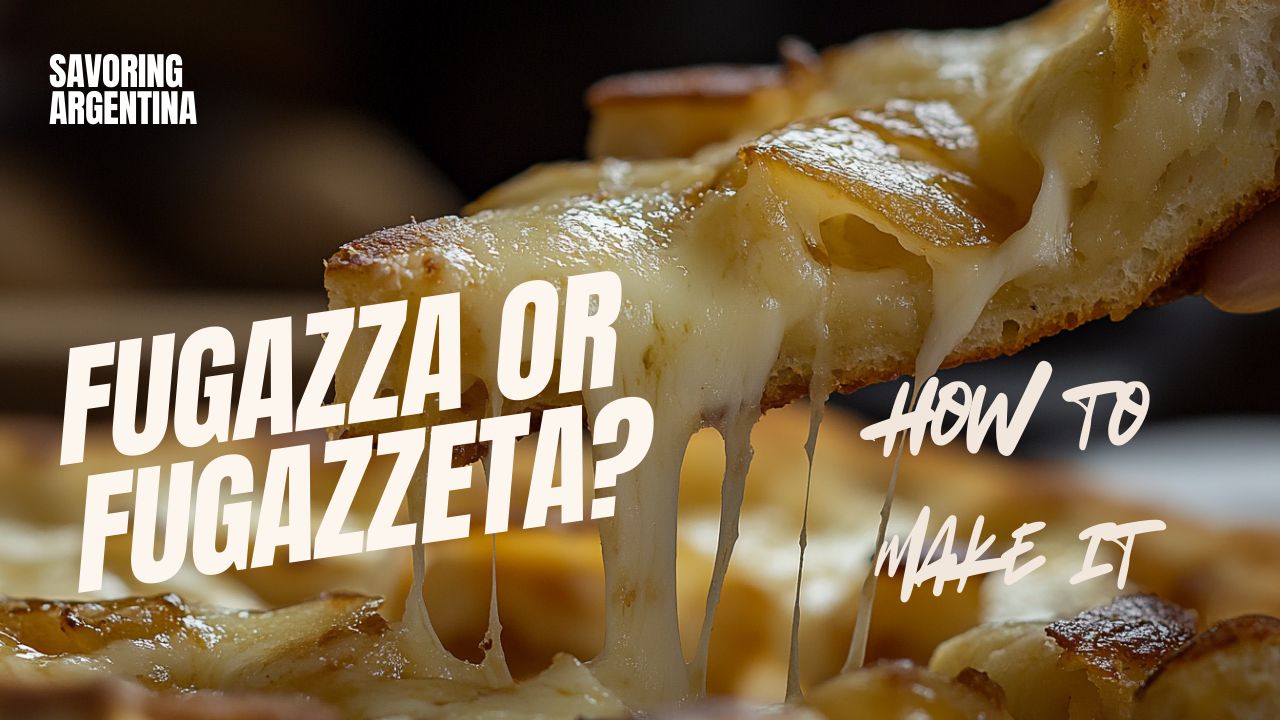When you think of Argentine cuisine, images of sizzling steaks, rich Malbecs, and sweet alfajores might dance through your mind. But among the country’s culinary treasures is a less heralded, yet utterly delicious dish that showcases Argentina’s deep Italian roots: fugazza and its decadent cousin, fugazzeta.
The origins: Italian heritage, Buenos Aires flair 🍞🇮🇹
Fugazza is Argentina’s take on focaccia, brought over by Italian immigrants, particularly from Genoa. Over time, the recipe adapted to local tastes and ingredients, evolving into a staple of Buenos Aires’ pizzerias. It’s a testament to the city’s reputation as a second home for Italian traditions.
What makes fugazza uniquely Argentine is its simplicity: a thick, airy crust topped generously with caramelized onions and a dash of oregano. It’s usually served without tomato sauce, allowing the sweet onions and golden dough to take center stage.
Then comes fugazzeta, the indulgent sibling. Stuffed with gooey mozzarella and often sprinkled with Parmesan, it’s everything you didn’t know you needed from a slice of pizza. Fugazzeta doubles down on comfort, with cheese not just on top but layered inside the crust—because why stop at just one cheese layer?

A pizza unlike any other 🍕
Unlike traditional Neapolitan pizza, fugazza and fugazzeta are all about the bread. The crust is thicker, almost like a deep-dish focaccia, making each bite satisfyingly soft and chewy. Onions, slowly cooked until they’re translucent and sweet, add a richness that’s both hearty and elegant.
In some versions, you’ll also find additions like olives, ham, or even roasted red peppers, but the essence of fugazzeta lies in its triumvirate of dough, onions, and cheese.
Where to try it 📍
If you’re in Buenos Aires, head to a traditional pizzería porteña like El Cuartito, Guerrin, or La Mezzetta—all beloved institutions that have perfected the art of fugazza over decades. I had the joy of visiting El Cuartito with my family, and we shared a round of their delicious pizzas—each slice better than the last. The atmosphere was lively, the service warm, and the flavors unforgettable.
Making it at home 🏠👩🍳
Craving fugazzeta from afar? It’s surprisingly doable at home. You’ll need a good dough (preferably one that can rise slowly for depth of flavor), plenty of mozzarella, and time to caramelize your onions properly. Bake it in a cast-iron skillet or deep dish pan for that authentic, crusty bottom.
🧅 Traditional fugazza recipe (Serves 4–6)
A soft, golden crust topped with sweet caramelized onions and aromatic oregano—fugazza is a humble yet beloved classic. Want a little extra indulgence? Add cheese for a fugazza con queso twist!
Ingredients:
For the dough:
- 3 ½ cups (450 g) all-purpose flour
- 1 tbsp sugar
- 2 tsp salt
- 1 packet (7 g) active dry yeast
- 1 ¼ cups (300 ml) warm water (not hot)
- 2 tbsp olive oil (plus extra for greasing)
For the topping:
- 3–4 large white or yellow onions, thinly sliced
- 2 tbsp olive oil (plus more for drizzling)
- 1 tsp dried oregano
- Salt and black pepper to taste
- (Optional) 200–250 g (7–9 oz) mozzarella cheese, sliced or shredded
Instructions:
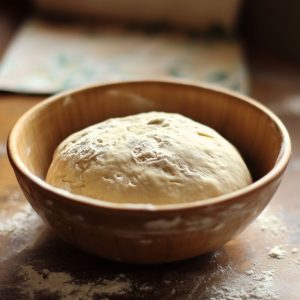 1. Make the dough:
1. Make the dough:
In a large bowl, mix the warm water, sugar, and yeast. Let sit for 5–10 minutes until foamy. Add the flour, salt, and olive oil. Mix until a dough forms. Knead on a lightly floured surface for about 8–10 minutes until smooth and elastic. Place in a lightly oiled bowl, cover, and let rise for 1 hour, or until doubled in size.
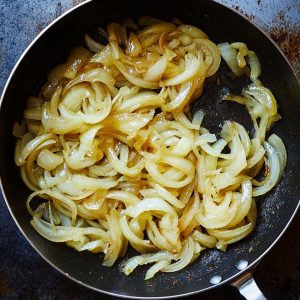 2. Prepare the onions:
2. Prepare the onions:
While the dough rises, heat olive oil in a large skillet over medium heat. Add the sliced onions and a pinch of salt. Cook gently, stirring occasionally, until they’re soft and golden (about 25–30 minutes). Low and slow is the secret to great flavor.
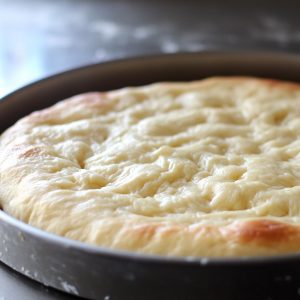
3. Pre-bake the dough:
Preheat your oven to 220°C (425°F). Grease a large round or rectangular baking pan. Punch down the dough and press it into the pan in an even layer. Let rest 10 minutes. Then bake for 10 minutes until just starting to firm up.
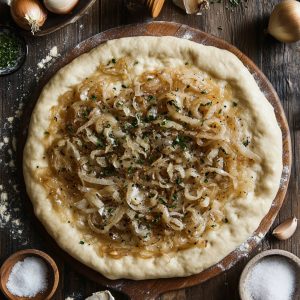
4. Add toppings and bake again:
-
For classic fugazza: Spread the caramelized onions over the dough. Sprinkle with oregano, salt, and pepper.
-
For fugazza con queso: First layer the mozzarella cheese over the dough, then add the onions on top. Finish with oregano and black pepper.
Drizzle with olive oil and bake for another 15–20 minutes, until the crust is golden and, if using cheese, it’s bubbly and slightly browned.
5. Serve hot:
Slice and enjoy! Fugazza is perfect on its own, or alongside a glass of red wine or a cold beer 🍷🍺
Want to make fugazzeta instead? 🧀
Fugazzeta is basically fugazza’s cheesier, more indulgent cousin. Here’s how to adapt the recipe:
 Just before step 3 (shaping the dough):
Just before step 3 (shaping the dough):
-
Split the dough in two: After the first rise, divide the dough into two equal portions—one for the base, one for the top.
-
Stuff with cheese: Press one portion of dough into your greased pan as the base. Cover it with plenty of mozzarella (about 300–400 g / 10–14 oz). You can also add slices of ham if you like. Then gently stretch the second portion of dough over the cheese, pinching the edges to seal.
-
Top and bake: Spread the caramelized onions over the top layer of dough, sprinkle with oregano and black pepper, and bake as directed.
The result is a warm, cheesy, onion-topped pie that oozes with every bite. Fugazzeta is rich, comforting, and utterly irresistible.
Final bite🍴
Fugazza and fugazzeta aren’t just meals—they’re edible expressions of Buenos Aires’ immigrant soul. They embody comfort, community, and that irresistible combination of dough, cheese, and onions that somehow feels like a warm hug.
Next time you’re looking to taste Argentina in a new way, forget the grill and turn on the oven. Fugazzeta is calling.
Have you ever tried fugazza or fugazzeta? What’s your favorite cheesy dish from around the world? 🧀
If you’ve been to Buenos Aires, did you stop by a local pizzería? I’d love to hear your stories and recommendations! 👇Drop a comment below and let’s talk food! 🍕❤️
More recipes:
Disclaimer: All photos are made by the author or created with Midjourney
